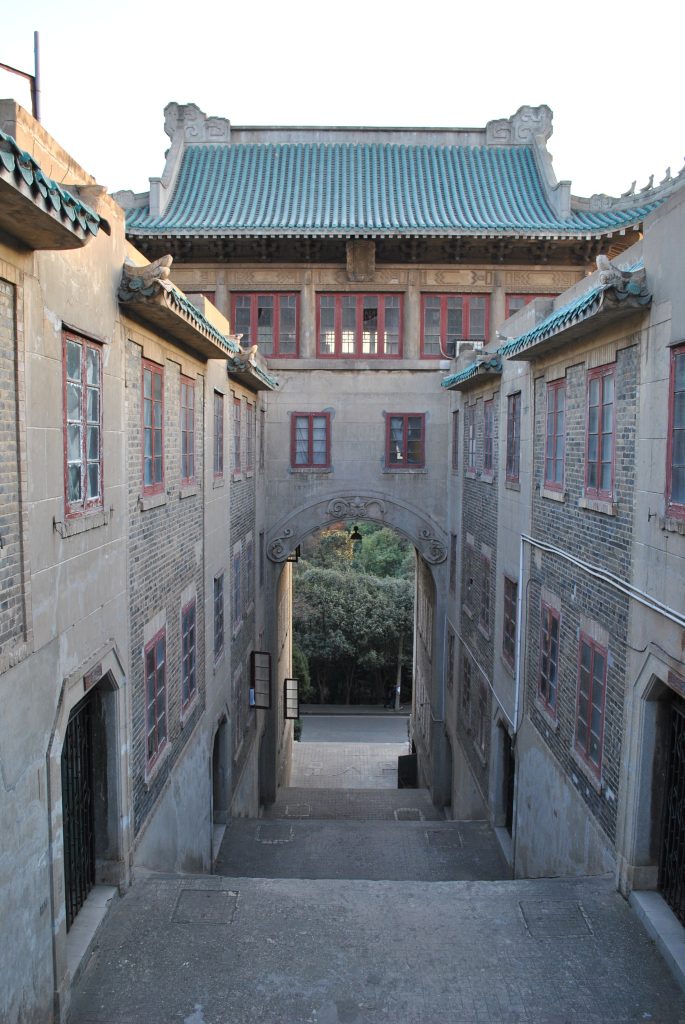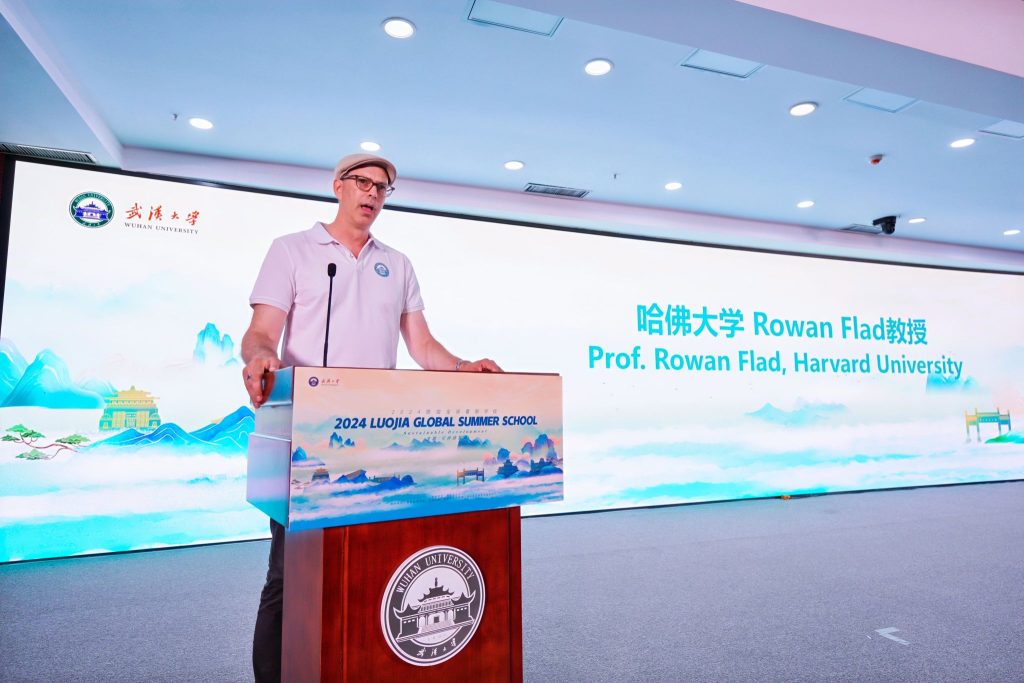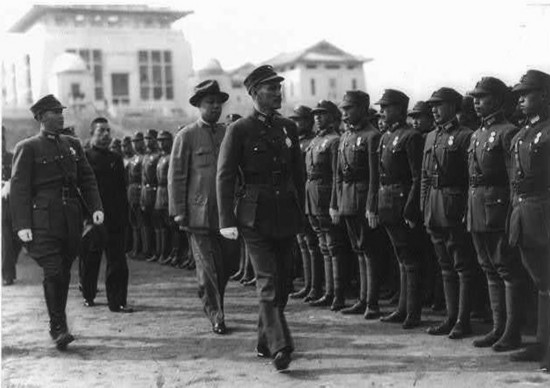Stroll through DKU’s campus on any random day, and you’ll experience a fashion show of Duke University pride. Hoodies decorated with logos, tote bags featuring the school crest, and t-shirts stamped with the unmistakable Blue Devils—DKU students love to showcase their affiliation. It’s hardly a surprise, considering the link between the universities; after all, a student migration to Durham for a semester has become a rite of passage.
Yet, what truly boggles the mind is the staggering difference in affection shown toward DKU’s other founding partner: Wuhan University (WHU). Spotting someone wearing a Wuhan University t-shirt is like finding a needle in a haystack. This imbalance has long perplexed me, prompting a quest to bridge the gap. And what better way to pay homage to the neglected half of DKU’s lineage than by diving into a summer exchange at Wuhan?
In the summer of 2024, almost a dozen DKU students participated in the Luojia Global Summer School’s Asian Architectural Culture and Heritage program, paying tribute to Wuhan University’s impressive history.

WHU’s foundations stem from imperial times, and the institution has stood as a sentinel through many of China’s most transformative events. The institution was first named the Ziqiang Institute, established by Zhang Zhidong, then governor of both Hubei and Hunan provinces in the late days of the Qing Dynasty. As it grew and matured, the institute underwent numerous changes until, in 1928, it emerged as National Wuhan University—one of the pioneering national universities in China’s modern era.
Wuhan University is notorious for its impressive collection of palatial architectural buildings, which meld China’s respect for its cultural heritage with contemporary Western architectural motifs.

Beginning in the 20th century, the architectural pinnacle of Wuhan University was its library—a symbol of traditional Chinese palatial architecture adorned with upside-down cornices and curiously painted eaves. Remarkably, the creative vision behind this structure was not of Chinese origin but rather the late MIT American architect Francis Henry Kales. Kales’ work on Wuhan stands as a testament to the institution’s avant-garde blend of Chinese artistic heritage with Western design principles.
Along with the Old Dorm, known as Cherry Blossom Castle—a residence for male students—the building has been an enduring witness to the history of the Luojia Mountain. In 2001, these buildings joined the ranks of China’s nationally protected cultural relics, a list that includes esteemed architectural masterpieces from prestigious institutions such as Peking and Tsinghua University.

The involvement of DKU in the architectural project came under the auspices of Wuhan’s Department of Architecture and Urban Design, and their Department of Archaeology, which allied itself with Harvard’s own.
Professor Rowan Flad of Harvard’s Department of Archaeology, who led the simultaneous Panlongcheng Archaeology Project, acknowledged the extensive history between both institutions. The program also collaborated with UNESCO’s Asia-Pacific Headquarters, gaining insight from the faculty of the National University of Singapore. Among the distinguished contributors was Professor Ho Puay Peng, who holds nearly three decades of expertise in architectural history and conservation.

Ho’s lecture shed light on his role as the UNESCO Chair on Architectural Heritage Conservation and Management in Asia. Professor Ho introduced his unique approach to evaluating architectural sites, distinguishing between “extraordinary” and “non-extraordinary” buildings while advocating for the protection of heritage across the spectrum. Furthermore, he delved into his innovative project of transforming a historical penitentiary into the University of Chicago’s Booth School in Hong Kong, emphasizing the sustainable practice of repurposing existing structures over demolition.
Amid these partnerships, the Wuhan Municipal Government is striving to have several historical landmarks—including the old Hankou Concession, Hanyangzao, Wuhan University, and Wuchang Shouyi—recognized as potential World Cultural Heritage sites.
The program revealed the challenging history of Wuhan, highlighting the university’s endurance through conflicts such as the Taiping Rebellion in the 1850s, the Qing troops’ onslaught in 1911, and Japanese bombings during the Second Sino-Japanese War. The faculty emphasized the university’s resilience and influence during these hard times. Historic figures including Zhou Enlai, China’s first premier who stayed at the university in 1938, along with literary names like Auden and Isherwood, and Mao Zedong himself, have all woven themselves into the tapestry of Wuhan University’s past. Its strategic importance was also spotlighted when it served as a military stronghold against Japanese forces before 1938 under the command of KMT leader Chiang Kai-shek.

The transformation of architecture at the university during the Cultural Revolution also painted a vivid picture of the times. With cultural expressions and education under scrutiny, factions of students and Red Guards targeted individuals for their “bourgeois attire,” dismantled “imperialist” signage, and intellectuals faced violence or were coerced into suicide. Wuhan University reflected these shifts, replacing its grand buildings with simpler, functional cement structures of minimal aesthetic appeal. Decades later, one can still see the remnants of the era on these buildings, including fading slogans eulogizing Mao Zedong.
In the 1980s, after the tumultuous periods of the civil war and the Cultural Revolution, Wuhan University saw significant transformations under President Liu Daoyu. His reforms aimed to elevate the university’s global status and cultural significance. Despite initial opposition, these reforms positioned Wuhan University among the elite institutions in China, on par with some of the most renowned Western universities. This status is reflected in the attitudes of the students, with some affectionately referring to Wuhan as the “Chinese Yale” for its trailblazing in fields like gender studies and science, as well as for producing distinguished alumni who continue to enrich the university’s legacy and reach.
For example, Chen Dongsheng, the CEO of Taikang Life Insurance Co., Ltd. and founder of China Guardian Auctions, demonstrates the significant contributions of Wuhan University alumni. In 2011, Chen generously donated 100 million yuan ($15.8 million) to establish an art museum at his alma mater. Crafted by the notable architect Zhu Pei, the museum’s deconstructivist architecture stands out like a “flying stone” near the Luojia Hills by Donghu Lake. The inspiration for the design can be traced back to a story where Chen etched the Chinese character “始” (shǐ) on a massive stone at Luojia Hills’ peak, symbolizing a new chapter following his graduation.


In the summer of 2024, DKU students got lost in a never-ending forest and stumbled upon grand old buildings reminiscent of a century past, unaware of the rich history of their school’s founding place. As they mingled with peers from far-flung nations—like the United Arab Emirates, Malaysia, Canada, Switzerland, Mongolia, Poland, Italy, Ghana, and Tunisia—they grew more attuned to Chinese culture.
Despite some challenges along the way, I concluded we should also wear t-shirts boasting Wuhan University because it is equally as cool. You will be seeing me with my WHU t-shirt in the upcoming semester.

